What does the four-year ban mean for his athletes, Nike and the health of distance running? Everything you need to know about the situation, in one short listen/read
Oct 3 at 5:38 pmPublic postedit

Photo cred: Stock image/The XC illustration
Word count: 1050
Time it’ll take you: 10 minutes
The Preamble: Michael Doyle here. When I get a notification on my phone from the likes of ESPN, NYT or the Guardian and it’s about something running related, it’s never a good thing. That’s why when my phone blew up with the words “ALBERTO SALAZAR” I knew what this week would bring.
Here we go:

After a four-year investigation, Nike Oregon Project coach Alberto Salazar has been barred from coaching by the US Anti-Doping Association for a four-year term, along with a Nike-paid doctor working with Salazar’s elite athletes.
Why this is a big deal: Salazar was one of the pillars of Nike’s recent global domination in distance running, headed their Oregon Project, which includes top American runners Galen Rupp and Jordan Hasay. Salazar also coached Mo Farah from 2011 until the four-time gold medalist left him in October 2017. During his time with Salazar Farah was a nearly unbeatable 5,000m and 10,000m runner. He, and no other Salazar athlete has ever failed a drug test.
Former Salazar athletes and colleagues blew the whistle on him back in 2015. This included prominent runner Kara Goucher, and coach Steve Magness, who both spoke to reporters for the British news program Panorama (in partnership with the US investigative site ProPublica), detailing Salazar’s methods.
This has immediate impact. Salazar is (or, perhaps it’s now “was”) in Doha at the IAAF World Championships, where seven of his NOP athletes are competing. Sifan Hassan of The Netherlands just tore up the track in the 10,000m. She’s also running the 5,000m in Qatar. Salazar has reportedly been stripped of his credentials and his athletes have been instructed not to communicate with him.
Why is Salazar being banned? For two years, USADA has been formally battling with Nike lawyers representing Salazar and Dr. Jeffrey Brown, an endocrinologist on the Nike payroll who saw many of the Oregon Project athletes. Former NOP runner Dathan Ritzenhein’s story in this 2017 feature from the New York Times is pretty damning. Here’s lead paragraph:
“Dathan Ritzenhein, an Olympic distance runner for the United States, was starting to feel sick from his thyroid medication — a drug that was not medically necessary but one that his coach, a powerful and combative figure in the sport, had strongly recommended to improve his performance.”
But it’s testosterone use that’s at the center of the investigation. Both Salazar and Brown are accused of possessing and trafficking a banned performance enchancer, according to the BBC. The 2015 report claimed that Salazar applied androgen gel to athletes, including Rupp, slathering it on them after workouts and races. Other dodgy medical strategies, including treating non-existent thyroid conditions highlighted by Ritzhenhein and others, have also been called into question in the past.
Read USADA’s statement here.
Tampering: Salazar and Brown are also accused of tampering with the doping control process.
Patient or pawn? Brown was condemned in the suspension for putting performance and the benefit of his employer as a consultant for the Nike Oregon Project ahead of his duty as a physician and the health and safety of the athletes.
Questions linger.
Will Nike cut Salazar or stand by him? To this point, the company has quietly supported Salazar, helping him fight the allegations by providing lawyers and presumably covering the legal fees, and allowing him to maintain his prominent role within the organization.
What Nike does next will be telling. Thus far, the NOP site, which sells the popular skull-and-wings-themed team-branded kit, quickly released a statement from Salazar, where he proclaims his innocence. This suggests they may double down on their coach, and dig in for a longer fight. Nike did release a statement claiming no knowledge of the use of banned substances by their athletes:
“We support Alberto in his decision to appeal and wish him the full measure of due process that the rules require. Nike does not condone the use of banned substances in any manner."
What that statement really says: It’s important to note the careful line here between suggesting support of Salazar, while hedging slightly, leaving the company an out if need be.
What happens to Galen Rupp et al.? Rupp has been the Oregon Project calling card for years. Salazar first identified Rupp’s talent as a high schooler, and in many ways the NOP system is modelled after what has worked for Rupp. Under Salazar and Nike, Rupp has been sculpted into an Olympic medalist on the track and in the marathon, employing periods of legendarily intense training with the science and technology that only a company such as Nike could afford. Now that those methods are officially being categorized as cheating, the track record of Salazar’s athletes will surely be picked apart. Rupp in particular had been scrutinized for years, and his coach’s suspension comes at a vulnerable time for the athlete, who just finished rehabbing a difficult achilles injury, and is set to race Chicago, a carefully choreographed situation that he won two years ago. It felt as much a coronation as it did a victory for Rupp. And all this comes during a phase in his career where these allegations seemed all but behind him, and he was finally being embraced as an American great, instead of a robotic villain.
Another hit to the status of the sport. Rupp and Jordan Hasay are key marketing tools for Nike in the US, helping grow distance running, which is the foundation of the company’s sales strategy (don’t forget, Nike started out as a running shoe maker first and foremost). These athletes have been deeply involved in the protracted and secretive testing and rollout of Nike’s highly successful Vapour Fly lineup of shoes, which helped reestablish the brand as not only a sales leader, but as the top innovator. Since Nike launched the project with its carbon-plated shoe, pretty much every brand has been forced to respond with its own spin on the technology.
It now seems that the next major doping crisis is just invariably waiting around the corner with running.
Takeaways:
Oh, Chicago… The timing is particularly bad for Nike, and for the sport. The spotlight is on running right now, with the IAAF World Championships in Doha, followed by the Chicago Marathon, Eliud Kipchoge’s second attempt at a sub-two-hour marathon and the New York City Marathon in quick succession. Watch out for the Chicago Marathon in particular to be an awkward moment for the Swoosh, as Rupp, Farah and Hasay will all racing. The added media attention is sure to overshadow the actual race.
If a coach gets busted for doping athletes… what about the doped athletes? I’m sure this will not be the end of the story.






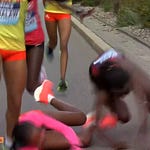
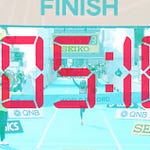
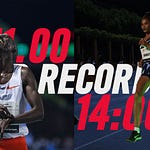
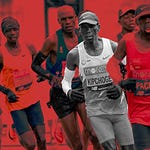
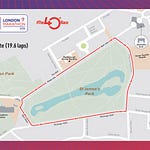
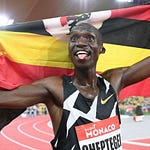
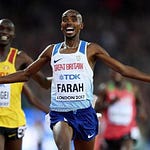
Share this post